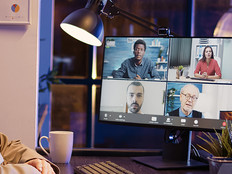Machine-Driven Networking Could Double Transmission Speeds
What if the secret to faster, better networking speeds didn’t lie solely in hardware, additional switches and access points, but in letting the machines do the network management decision making?
Network administrators might be breaking out into a sweat after reading that first line, but hear me out.
According to a press release from the MIT News Office, a machine-driven system called Remy can generate TCP algorithms that could double network speeds.
In tests that simulated a high-speed, wired network with consistent transmission rates across physical links, Remy’s algorithms roughly doubled network throughput when compared to Compound TCP and TCP Cubic, while reducing delay by two-thirds.
The researchers behind the project, Hari Balakrishnan, a Fujitsu professor in electrical engineering and computer science, and graduate student Keith Winstein, plan to share their findings at the annual conference of the Association for Computing Machinery’s Special Interest Group on Data Communication.
Balakrishnan believes that a machine-driven approach to TCP management can outperform humans because computers are better at handling networking complexities.
“When you have even a handful of connections, or more, and a slightly more complicated network, where the workload is not a constant — a single file being sent, or 10 files being sent — that’s very hard for human beings to reason about. And computers seem to be a lot better about navigating that search space,” he says.
Experts outside of MIT are excited by the prospects of Remy and machine-driven networking as well. “I am thrilled by the approach,” says Victor Bahl, research manager of the Mobility and Networking Group at Microsoft Research, in the MIT press release. “When you can constrain the problem domain and define precisely what you want out of the protocol, I can believe that their system is better than a human.”
The goal isn’t to eliminate humans from IT processes simply for the sake of it, but to place humans in the parts of the process where they have the most value. While it’s early days for the technology, if machines can handle more of the networking management on their own, then that frees human resources to tackle other projects.
Although I imagine that there will always be enthusiasts who insist on doing their own TCP management, similar to the drivers who refuse to drive cars with an automatic transmission and opt for vehicles with a stick shift.







